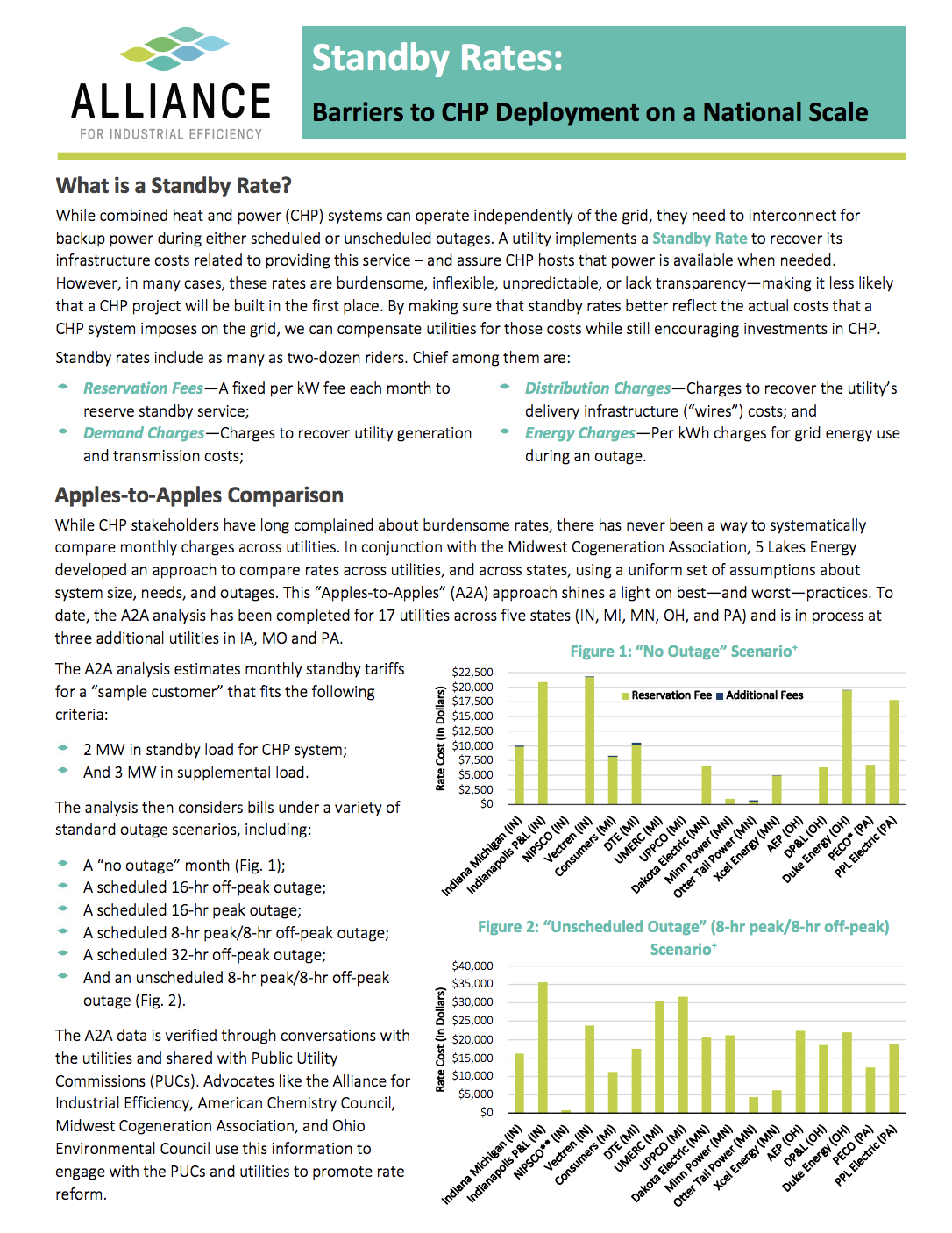Though combined heat and power (CHP) systems are known for their ability to operate in “island mode” independently of the central grid, they occasionally need to interconnect for supplemental or backup power during either scheduled or unscheduled outages. Utilities implement standby rates to recover the costs associated with assuring a CHP host has access to grid power when needed. Yet, in many instances, these rates are excessive, inflexible, unpredictable, or lack transparency—making it less likely that a CHP project will be built in the first place. By making sure that standby rates better reflect the actual costs that a CHP system imposes on the grid, we can compensate utilities for those costs while still encouraging investments in CHP. In collaboration with other partners, the Alliance has supported a new “Apples-to-Apples” analysis to help shine a light on best practices and quantify the burden that standby rates create for a “typical” (2 MW) CHP project.
Our new factsheet highlights the various issues surrounding standby rates, shares results of the “apples-to-apples” (A2A) rate analysis that has been initiated across 20 utilities in seven states, and explores how utilities and public utilities commissions (PUCs) are taking action to address this barrier to CHP. The two-page factsheet is available here.
Additional background about standby rates can be found here.

